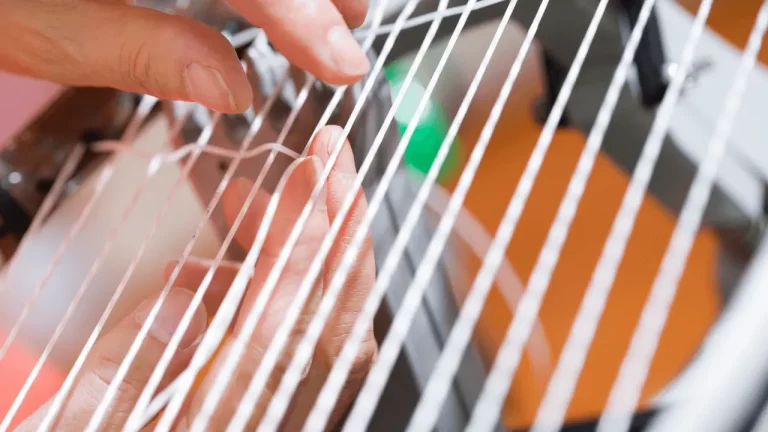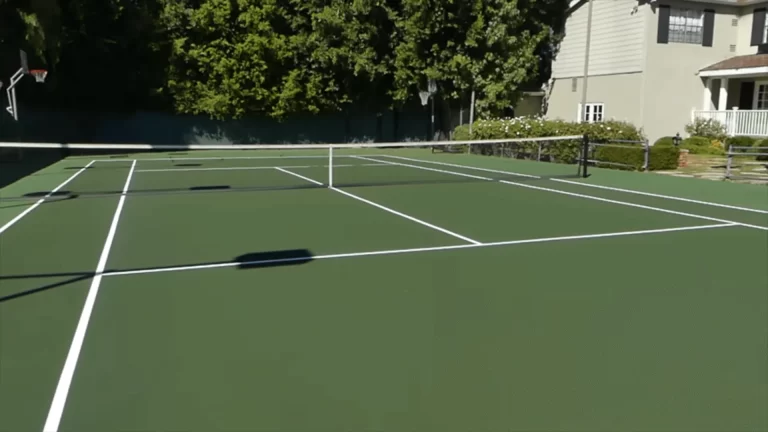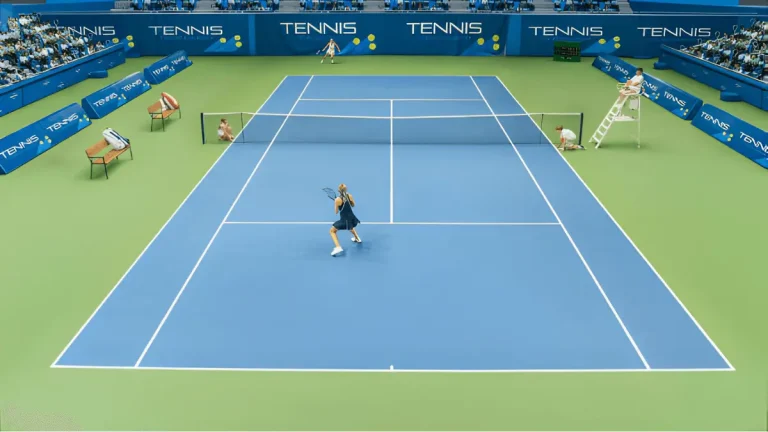Tiebreaker In Tennis – Know The Rules | 2024
In tennis, you must have heard the word “Tie Break”, who wins it, actually wins the game. But what is tie break actually? When does it appear and who plays it?
A tiebreak is an extra set of games that is played when both players reach a score of 6-6. The winner of the tiebreak is the winner of a tennis match. In simple words, you can say it is an extra set to decide the winner after two players are locked on a set of 6-6 points.

So, it is not a very well-known thing to many, but in many matches, it decides the winner. Let’s discuss it in detail and find out why Tiebreaker is important and when it exists.
What is a Tiebreaker in Tennis?
A tiebreak is a special off-game that determines the winner of a match between two tennis players when they secure equal points and have a tie. When a set is knotted 6 games to 6, the participants begin the tiebreak, and the initially positioned player who scores seven points wins the tiebreak and the entire set. If two players are tied at 6 points each, the player who begins to score by two points prevails.
Now the question arises when it starts because we all remember the longest tennis match back to Wimbledon 2010 when the match continued for 11 hours and 5 minutes. So, the tiebreak was just an option to conclude a match until 2018 when it was officially used in Grand Slam matches and now it is a must-have rule to conclude the matches where players tie at 6-6.
History and Significance of the Tiebreaker in Tennis
James H. “Jimmy” Van Alen, an American philanthropist and founder of the Tennis Hall of Fame in Rhode Island, developed the tiebreak in the first half of the 1950s to tackle the challenge of long matches.
The Van Alen Streamlined Scoring System (VASSS) argued for a “first to five” tiebreak (also known as a nine-point tiebreaker) and unexpected death, which allowed players to secure a point in the match if the score was tied 4-4.
The US Open was the inaugural Grand Slam competition to use the new ranking format. This technique eventually grew into the conventional 12-point (or first to seven) tiebreaker used presently.
Rules for Tennis Tiebreak
The principles are basic. The one who reaches seven consecutive points first (or leads by two points if tied 6-6) wins the battle for the tiebreak and the entire set.
The participant who regained service in the final game of the final set gets the option to begin the process of tying hitting from the right side of the surface. During the initial point, the serving position shifts, and the opposite player has two serves, the first from the left side of the playing field.
When the total amount of individual points is an uneven number, the serve is always changed. Following a single point, two more, and furthermore. The justification for this is that the person who prevails must score a minimum of one point whilst the other player serves. It is referred to as a “mini-break”.
Following each six scores, participants must exchange positions. Throughout this transition, they are not permitted to remain seated down. They are simply permitted to make their way to the opposite side and receive a sip of water if necessary.
Tiebreak Rules for Doubles
The equivalent premise applies as in singles: the combination that retrieved service in the previous game serves first in the tiebreak. The opposing team’s player who is scheduled to serve shortly will serve the following pair of points.

Following that, beginning with the initial team, each team member who will serve thereafter alternates for two consecutive points until the tie-break is completed. To make doubles matches more intriguing for fans, the tennis associations agreed a few years ago to substitute the final set with a ten-point tiebreak. This rule of thumb is in effect for all competitions excluding the Grand Slams.
Tennis And Its Different Types Of Tie-Breaks
Even Tennis Tiebreaks have types that all the players can play, as they wish.
- 12-point Tiebreaker: despite the fact that this tiebreaker is played by the first seven, it is formally referred to as a “12-point tiebreak” game because the game with the highest number of 12 points is won by two (7-5). Drawing this tiebreaker brings the final score of the match to 7-6, and the participant wins the set after seven games. Extended tiebreaks are still possible after 12 points if neither participant wins by two points.
- 10-point tiebreaker: another kind, also known as the extreme tiebreaker, takes place first to ten with a two-point margin of victory. In men’s singles play, this happens after a draw in the fifth set, whereas in women’s singles, it happens during the concluding set.
Final Thoughts
Tiebreaks have proved to be an amazing innovation in many respects. They increase enthusiasm since every single score matters. It may additionally contribute to unexpected outcomes and shocks if an outstanding player has a couple of bad days and makes numerous unintentional mistakes.
Furthermore, it advantages players with a strong serve because getting “mini-breaks” is critical to winning a Tiebreak.
They also help maintain the game brief. This is especially important for Grand Slam participants, who have limited respite among games and don’t want to be on their feet for eleven sets. The development of the 10-Point Tiebreak also served to preserve the appeal of mixed matches. It resulted in them being less long and more fun to look at.
FAQs
Is a Tiebreak to 7 or 10?
A 10-point tie-break comes with the exact same structure as a conventional seven-point tie-break: a single player begins by assisting for one point, then it shifts among two subsequent serves from each participant, with the player who wins is who is first to reach 10 points, as long as they are a minimum of a couple of points in advance of their competitor.
How does a tie break work in Tennis?
The tiebreaker is won by the first person or team to score seven points by two. Therefore, the result could be very favorable (15-13) or as low as 7-0 to 7-5. Whichever wins the tiebreak game wins the set, 7-6.
What does 7 mean in Tennis?
Usually, the tiebreaker proceeds unless one team wins seven points by an amount of at least two scores. Nevertheless, some tiebreakers use alternative tiebreak point criteria, such as 8 or a maximum of 10. When the set score is deadlocked at 6-6, a seven-point tiebreaker is typically used to figure out who takes the set.






